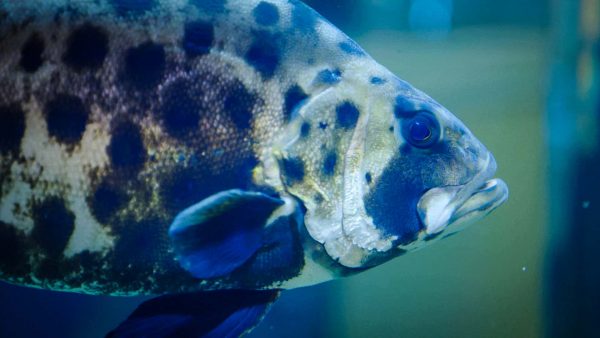Watershed Definition
A watershed is a large area of land that drains into a body of water. For example, rain in a watershed flows into a single river.
View Lesson on Water Quality & Distribution
Become a member to get full access to our entire library of learning videos, reading material, quiz games, simple DIY activities & more.
Become a member to get full access to our entire library of learning videos, quiz games, & more.
Plans & Pricingto watch this full video.

Access All Videos
and Lessons, No Limits.
Access All Videos

No credit card required,
takes 7 sec to signup.
No card required

Ready-to-go lessons
that save you time.
Ready-to-go lessons
If you are on a school computer or network, ask your tech person to whitelist these URLs:
*.wistia.com, fast.wistia.com, fast.wistia.net, embedwistia-a.akamaihd.net
Sometimes a simple refresh solves this issue. If you need further help, contact us.
Water Quality & Distribution
Fun Facts
- Agricultural runoff can contaminate water with fertilizers and pollutants.
- Polluted runoff can create dead zones in oceans where marine life can't survive.
- Storm drains carry pollution from streets into bodies of water.
Why Do We Need To Know About Watershed
Learning about watersheds helps us understand how the quality of water affects the environment and our health. It’s important for many jobs, not just for scientists who study water, but also for people who work to keep our water clean. Groups like Heal the Bay use this knowledge to keep an eye on water health, which helps keep people safe and protects nature.
Jobs in designing water cleaning technologies and managing how water is cleaned also depend on knowing about watersheds. This shows how knowing about watersheds is helpful for many different kinds of work.
Frequently Asked Questions
Check out the Full Lesson on Water Quality & Distribution
In this lesson, we learn that:
- 97 percent of Earth's water is in oceans.
- Plants and animals depend on clean water to survive.
- Humans can negatively affect water quality even if they live far away from it.
Related Topics
- Absorbency Definition
- Analog Signal Definition
- Binary Code Definition
- Bioindicator Definition
- Conservation Biologist Definition
- Decomposer Definition
- Definition Of Science
- Engineer Definition
- Environment Definition
- Erosion Definition
- Exoskeleton Definition
- Geosphere Definition
- Hearing Definition
- Landform Definition
- Landslide Definition
- Latitude Definition
- Liquid Nitrogen Definition
- Lunar Eclipse Definition
- Matter Definition
- Mineral Definition
- Mitochondria Definition
- Moon Definition
- Mutualism Definition
- Natural Resource Definition
- Nonrenewable Resource Definition
- Ocean Current Definition
- Orbit Definition
- Organ Definition
- Paleontologist Definition
- Pendulum Definition
- Plant Growth Definition
- Precipitation Definition
- Prevailing Winds Definition
- Problem Definition
- Property Definition
- Pulley Definition
- Reactants Definition
- Renewable Resource Definition
- Respiratory System Definition
- River Definition
- Scientific Name Definition
- Sediment Filter Definition
- Simple Machines Definition
- Star Definition
- Water Definition
- Water Quality Definition
- Watershed Definition
- Weather Map Definition
Start a Free Trial Today. Get a $5 Amazon Gift Card!
Teachers! Start a free trial & we'll send your gift card within 1 day. Only cards left. Try it now.
Select Grade
Select Subject
This email is associated with a Science Kit subscription. Kit subscriptions are managed on this separate page: Manage Subscription

-
Download InvoiceScience & Math$/yr
-
Download InvoiceScience Only$/yr

access all lessons
• No credit card required •
"My students loved the videos. I started the video subscription in May and used them as a review before the state test, which I know contributed to 100% of my class passing the state test."
Rhonda Fox 4th Grade Teacher, Ocala, Florida
• No credit card required •
"My students loved the videos. I started the video subscription in May and used them as a review before the state test, which I know contributed to 100% of my class passing the state test."
Rhonda Fox 4th Grade Teacher, Ocala, Florida
• No credit card required •
Already a member? Sign In
* no credit card required *

* no credit card required *
* no credit card required *


no credit card required
Skip, I will use a 3 day free trial
Enjoy your free 30 days trial
-
Unlimited access to our full library
of videos & lessons for grades K-5. -
You won’t be billed unless you keep your
account open past your 14-day free trial. -
You can cancel anytime in 1 click on the
manage account page or by emailing us.
-
Unlimited access to our full library of videos & lessons for grades K-5.
-
You won't be billed unless you keep your account open past 14 days.
-
You can cancel anytime in 1-click on the manage account page.
Cancel anytime in 1-click on the manage account page before the trial ends and you won't be charged.
Otherwise you will pay just $10 CAD/month for the service as long as your account is open.
Cancel anytime on the manage account page in 1-click and you won't be charged.
Otherwise you will pay $10 CAD/month for the service as long as your account is open.
We just sent you a confirmation email. Enjoy!
DoneWe use cookies to make your experience with this site better. By using this site you agree to our use of cookies. Click "Decline" to delete and block any non-essential cookies for this site on this specific property, device, and browser. Please read our privacy policy for more information on the cookies we use.Learn More
We use cookies to improve your experience. By using this site, you agree to our use of cookies. Click "Decline" to block non-essential cookies. See our privacy policy for details.Learn More




























































































































